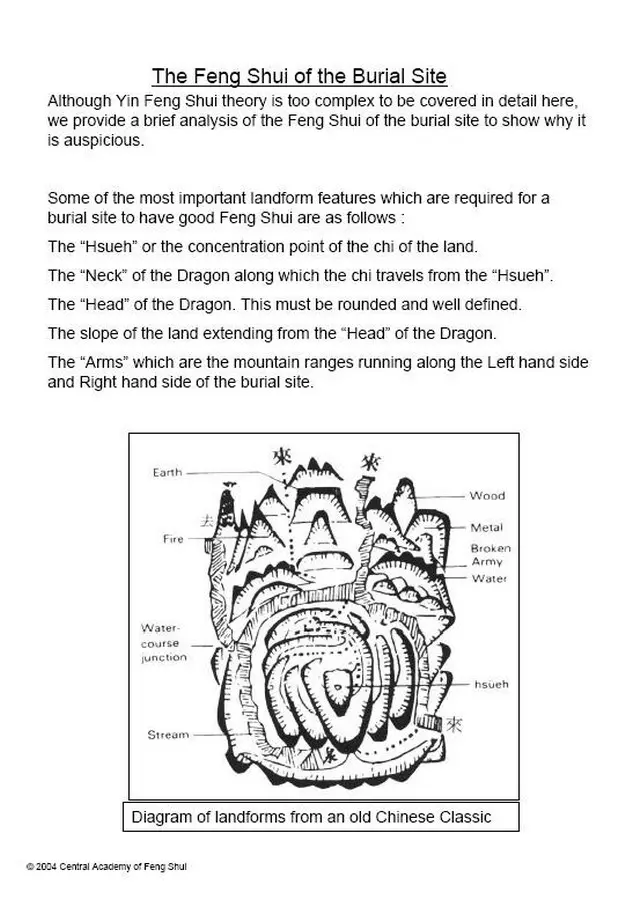 The HSBC Building in Hong Kong by Foster + Partners. ©Foster + Partners.
The HSBC Building in Hong Kong by Foster + Partners. ©Foster + Partners.
 The Bank of China Tower in Hong Kong by I. M. Pei. ©Wikipedia.
The Bank of China Tower in Hong Kong by I. M. Pei. ©Wikipedia.
 Photograph of The Sydney Opera House in Australia. ©Jørn Utzon
Photograph of The Sydney Opera House in Australia. ©Jørn Utzon
Fengshui, also known as Chinese Geomancy, is an ancient philosophy that aims to create harmony between people, buildings, and nature based on traditional Chinese beliefs. It is a set of guidelines that have been passed down through many generations in ancient China. While traditionally used to position structures such as tombs, homes, and fields, Fengshui still plays a significant role in Asian Architecture today. Many renowned architects consult Fengshui masters to incorporate these concepts into their projects. In this article, we will explore 10 essential things that architects and designers must know about Fengshui.
1. Introduction to Various Feng Shui School Approaches
As the saying goes, "For every ten years, Feng Shui takes a turn." This means that one's fate is constantly changing. To help people achieve prosperity in life, relationships, and careers, different schools of Feng Shui have been established. These schools promote various approaches to determine the best Feng Shui layouts, such as Ti Li (Form Branch), which uses "Forms" methods to analyze the environment, and LiiQi Pai (Compass Branch), which utilizes compass-based analysis following the San Yuan and San He methods.
 Photograph of a Feng Shui Compass Known as a Luo Pan. ©Tatler Hong Kong.
Photograph of a Feng Shui Compass Known as a Luo Pan. ©Tatler Hong Kong.
2. The Most Essential Term in Fengshui: Qi
Qi, which refers to a person's positive or negative life forces, plays a crucial role in Fengshui. The goal of Feng Shui is to build structures on sites with good Qi to provide a harmonious living environment. The flow of Qi is mentioned in ancient texts, such as the Book of Burial, which highlights the strategic placement of burials to harness the "vital Qi" of the land. It is believed that the quality of Qi in a space can be enhanced through the careful arrangement of elements.
 A diagram showing the Fengshui Properties of the Burial Site. ©Feng Shui Consultant Malaysia.
A diagram showing the Fengshui Properties of the Burial Site. ©Feng Shui Consultant Malaysia.
3. Feng Shui Has Many Theories to Achieve Good Qi
The Yin and Yang theory and the Five Element concept are fundamental theories used in Feng Shui. The Yin and Yang theory explores the idea of polarity, with opposing forces creating energy. The Five Element concept uses materials and colors representing Water, Fire, Wood, Earth, and Metal to benefit well-being. These principles can be applied in projects of various scales, from city planning to the construction of buildings, to achieve spiritual wellness for the inhabitants.
 A Diagram showing the Yin and Yang Symbol with its Respective Characteristics. ©Inspired Yoga.
A Diagram showing the Yin and Yang Symbol with its Respective Characteristics. ©Inspired Yoga.
 A Diagram showing the Five Element Theory and their cycles. ©Fengshui Nexus.
A Diagram showing the Five Element Theory and their cycles. ©Fengshui Nexus.
4. The Use of the Eight Trigrams in Floor Plans
The Bagua, or Eight Trigrams, is an important concept in Fengshui. Derived from ancient Feng Shui diagrams, the Bagua is used to analyze the flow of Qi in a space. Architects often apply the Bagua to arrange rooms in floor plans and set boundaries to allow better movement of energy. There are two types of Bagua arrangements: Earlier Heaven Arrangement and Later Heaven Arrangement. The placement of the Bagua in floor plans helps optimize the flow of positive energy throughout the space.
 A Diagram showing a Bagua with the Early Heaven Arrangement. ©Feng Shui- LoveToKnow.
A Diagram showing a Bagua with the Early Heaven Arrangement. ©Feng Shui- LoveToKnow.
 A Diagram applying the Bagua Map on a House's Floor Plan. ©Fengshui.
A Diagram applying the Bagua Map on a House's Floor Plan. ©Fengshui.
5. The Preferred Shape of the House is Geometrical
Square or rectangular shapes are preferred in Fengshui as they promote balance, symmetry, and maximum functionality. The Forbidden City in Beijing is a prime example of this guidance, with its square layout and bilateral symmetry. Structures within the imperial palace, as well as the Temple of Heaven and the Altar of Agriculture, are carefully arranged symmetrically. This emphasis on geometric shapes can be seen in modern architecture, where balanced symmetry is sought to create a harmonious energy flow.
 A Diagram analyzing the Layout of the Forbidden City. ©Mr. Orange Transfers.
A Diagram analyzing the Layout of the Forbidden City. ©Mr. Orange Transfers.
6. Curves are also Welcomed in Design to Achieve Good Fengshui
While geometric shapes are favored, Fengshui also welcomes the use of curves in design. Curved elements allow positive Qi to circulate constantly, creating a high-energy space. Bridges, corridors, and rivers in ancient Chinese streetscapes often feature curved elements. However, excessive curves can result in high energy levels, making spaces too hectic. A balance between geometrical and curved features is essential to achieve optimal Qi flow and living comfort.
 A Portion of a Historical Chinese Painting known as Along the River During the Qingming Festival. ©China Online Museum.
A Portion of a Historical Chinese Painting known as Along the River During the Qingming Festival. ©China Online Museum.
7. Fengshui Utilizes Natural Features such as Geographical Features, Daylight, and Proper Ventilation in Buildings
Fengshui considers the surrounding landscape when orienting buildings. The front of the house typically faces a waterbody, while the back is placed towards mountains to harness the good Qi from these natural features. Sunlight and good air circulation are also crucial for good Fengshui. The placement and design of doors and windows play a significant role in optimizing the flow of Qi. Avoiding direct alignment of doors and windows and ensuring proper spacing allows for better natural light and airflow, enhancing the building's Fengshui properties.
 A Diagram showing how the Surrounding Natural Landscape results in the Ideal City State. ©Blue Mountain Fengshui Institute.
A Diagram showing how the Surrounding Natural Landscape results in the Ideal City State. ©Blue Mountain Fengshui Institute.
8. Resting Areas should Avoid Sharp Corners and Protruding Objects
Sharp corners and protruding objects, also known as Poison Arrows or Sha Chi, can negatively impact personal Qi energy. It is important to avoid or minimize these objects in areas where you spend a significant amount of time, especially in the bedroom. Simple adjustments such as repositioning furniture, using round-edged objects, or draping cloth over sharp corners can reduce the negative effects of Poison Arrows, allowing homeowners to relax and maintain positive energy within their dwellings.
 A Drawing showing More Examples of Bad Feng Shui: Sharp Edges of the Wall. ©Feng Shui Beginner.
A Drawing showing More Examples of Bad Feng Shui: Sharp Edges of the Wall. ©Feng Shui Beginner.
9. Important Feng Shui Rules in Room Arrangement Within the House
Feng Shui emphasizes the proper arrangement of rooms based on their properties. Bedrooms, as resting areas, should be placed away from high-energy spaces such as the garage, kitchen, office, and stairs. Home offices should be enclosed to contain their energy. Additionally, Fengshui discourages placing the bedroom and laundry room next to each other, as the elements from these rooms can clash. Bedrooms on different floors should also be positioned to avoid being directly above or below each other, ensuring harmonious energy flow throughout the house.
 A Diagram showing the Added Partition to Separate the Living Room and the Bedroom. ©Feng Shui- LoveToKnow.
A Diagram showing the Added Partition to Separate the Living Room and the Bedroom. ©Feng Shui- LoveToKnow.
10. The Colors Used for the Building Affects its Fengshui
Colors play a significant role in Fengshui, as they are associated with the five elements. Different colors represent different energies and can bring about either positive or negative effects. The color palette used in specific directions can create a beneficial energy cycle, balancing the environment and nourishing the lives of the inhabitants.
 A Diagram showing the Range of Colors used to Represent Each Element. ©Know Feng Shui.
A Diagram showing the Range of Colors used to Represent Each Element. ©Know Feng Shui.
In conclusion, Feng Shui offers a wealth of knowledge and insights for architects and designers. By incorporating Feng Shui principles into their projects, they can create spaces that promote harmony, balance, and positive energy flow. For a more accurate and insightful application of Feng Shui, it is recommended to consult experienced Fengshui masters specific to your project.

















